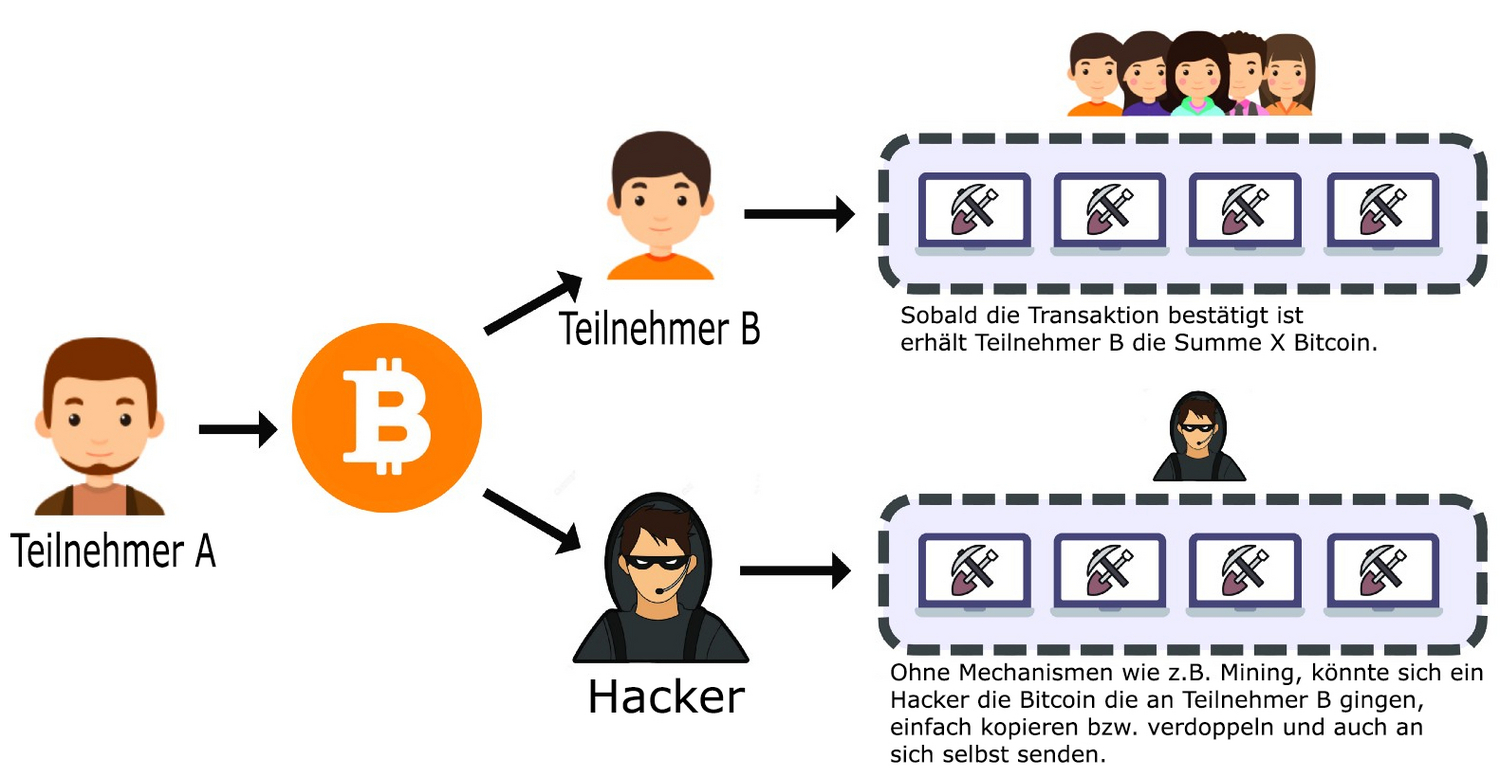What is a blockchain? Many people have already heard the term on the radio, television, in print or online and may have read one or two definitions. Unfortunately, in my past I have repeatedly experienced first-hand that many definitions are incorrect or incomplete. And admittedly, it is not easy to convey such a complex construct and the many facets it entails in a short text or definition. Nevertheless, we will try in this article and deal with one of the most important definitions in the crypto sector in today's Blocktrainer1x1 episode: "What is a blockchain?"
In simple terms, a blockchain is a database that contains information, is operated according to certain rules and is constantly updated by all network participants reaching a common consensus.
Certain mechanisms are required so that all participants in a blockchain network can agree on a common consensus and all accept the same status of the blockchain as the currently valid status quo. These can be imagined as a kind of "digital super-notary". It is neutral and independent. No one can control it. No one can claim ownership of its service. The purpose of this mechanism is to define and record the truths in this database without any entity having a direct influence on it. All of these points ensure that a blockchain is a construct that can create trust between unknown parties.
As you can see from the word "blockchain", it consists of the terms "block" and "chain", i.e. a chain of blocks. But what exactly are blocks and how and why are they linked?
The individual blocks of a blockchain essentially consist of two parts: A header, which - in addition to some other block data - each contains a reference to the previous block and a timestamp, and a body, in which transactions that are to be processed via the network are summarized.
If participant A makes a transaction of amount X to participant B, this is noted in a block and can therefore be seen and checked by all network participants.
There are various mechanisms for updating the blockchain and determining who is authorized to add a new, valid block to the end of the chain. In the case of Bitcoin, probably the best-known blockchain, it is the so-called "proof of work", which is also known as mining. We have already covered what mining is and how it works.
By referencing the previous block with the help of hashes(we have also already learned what these are), it is impossible to change a block without invalidating all subsequent blocks. So if someone were to subsequently try to change a transaction that has already been carried out, all other network participants would notice this immediately, as the reference to the "fraud block" would no longer match and the fraudster would have destroyed the chain.
If you want to play around visually with a blockchain to get a feel for how the system works, you can do so here:

You can use this tool to recognize that the hash of the previous block is always included in each subsequent block and therefore a reference has been created. If you subsequently make a change in a previous block, the color of the chain will immediately change from green to red.
You should also notice that if you change data in a block and press "mine", the "Nonce" field will also change in addition to the hash of the block.
This nonce ("number used once") is basically the "piece of the puzzle" that we talked about in the article on mining. The miners simply try the puzzle pieces, i.e. numbers, until the number in combination with the data in the block results in a valid hash. This is how the "proof of work" or the updating of a blockchain works and ensures that the data in a blockchain is not subsequently changed.
Mechanisms such as the " Proof of Work " (or the equally well-known "Proof of Stake") primarily serve to make the network resistant to various attack scenarios, such as so-called "Sybil attacks" or "double spending".
An attack in which an attacker creates a large number of pseudonyms in order to gain more influence in the network is called a "Sybil attack".
You can imagine double spending as follows: An attacker owns one Bitcoin. If he were to send this one Bitcoin several times to different parties, he would be defrauding the network because he could only send this Bitcoin once (if it were not digital). Or hackers could simply copy coins from compromised transactions and pay them out themselves. Visualized in the following diagram:

Bitcoin was created as a public blockchain. Anyone can download the blockchain software and participate in the network. This allows your computer to interact with other computers and download, read, validate and compare their entries with your own software.
In contrast to this are private blockchains (restricted access blockchain). These can be set up by a company or consortium. The purpose is to create a shared database for a specific group in which all authorized users can agree on a common truth.
What you should take away from this short article: